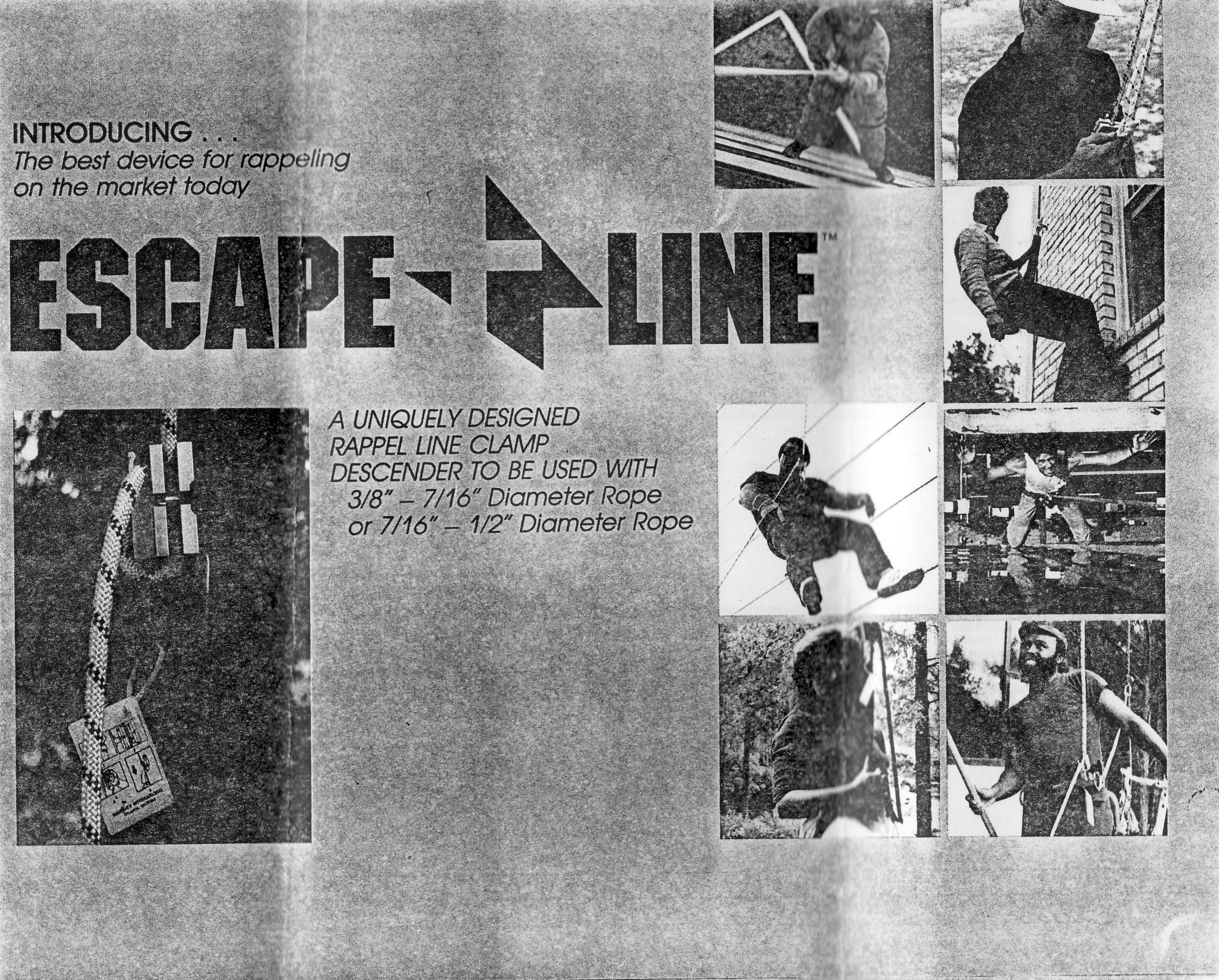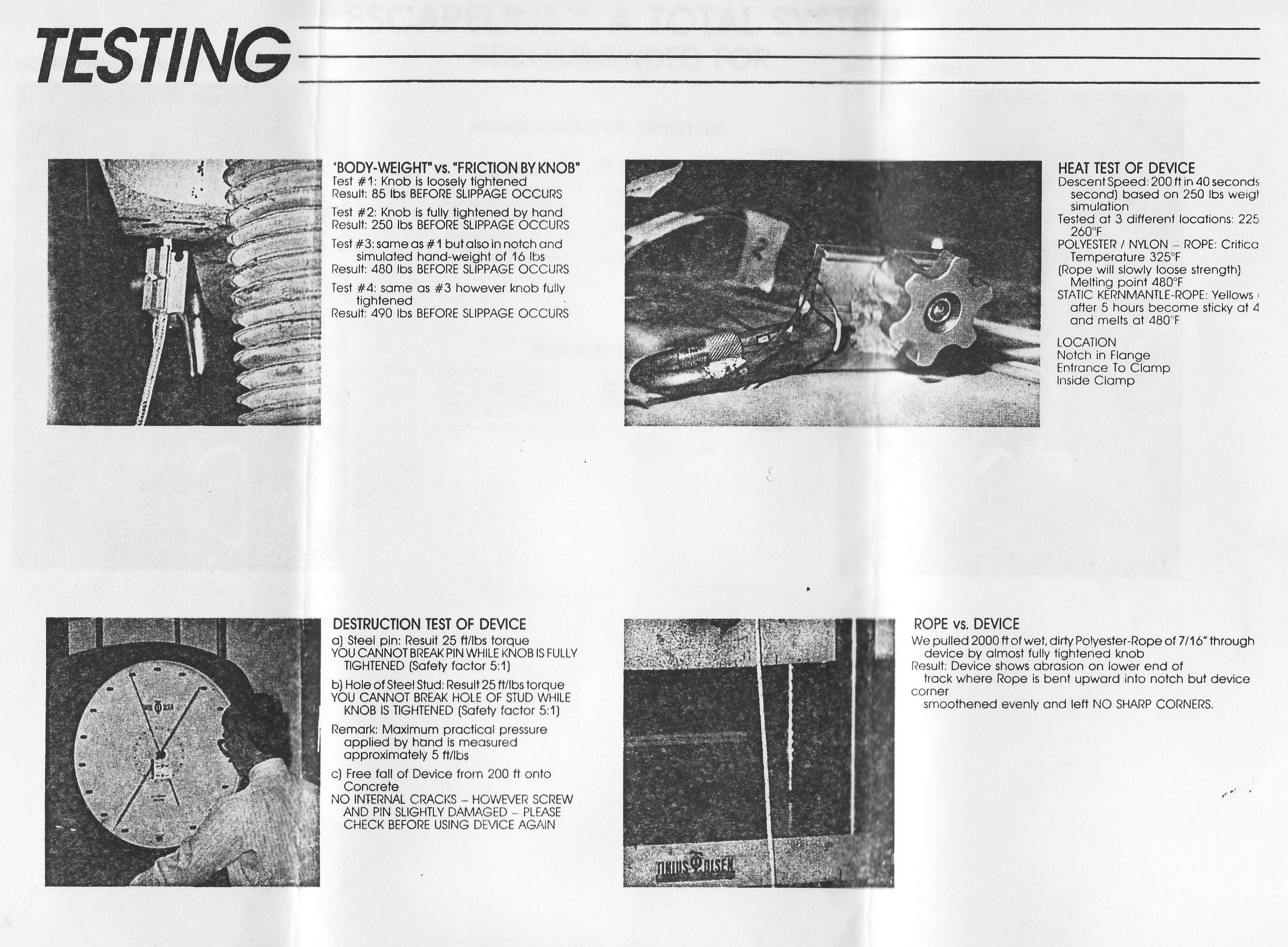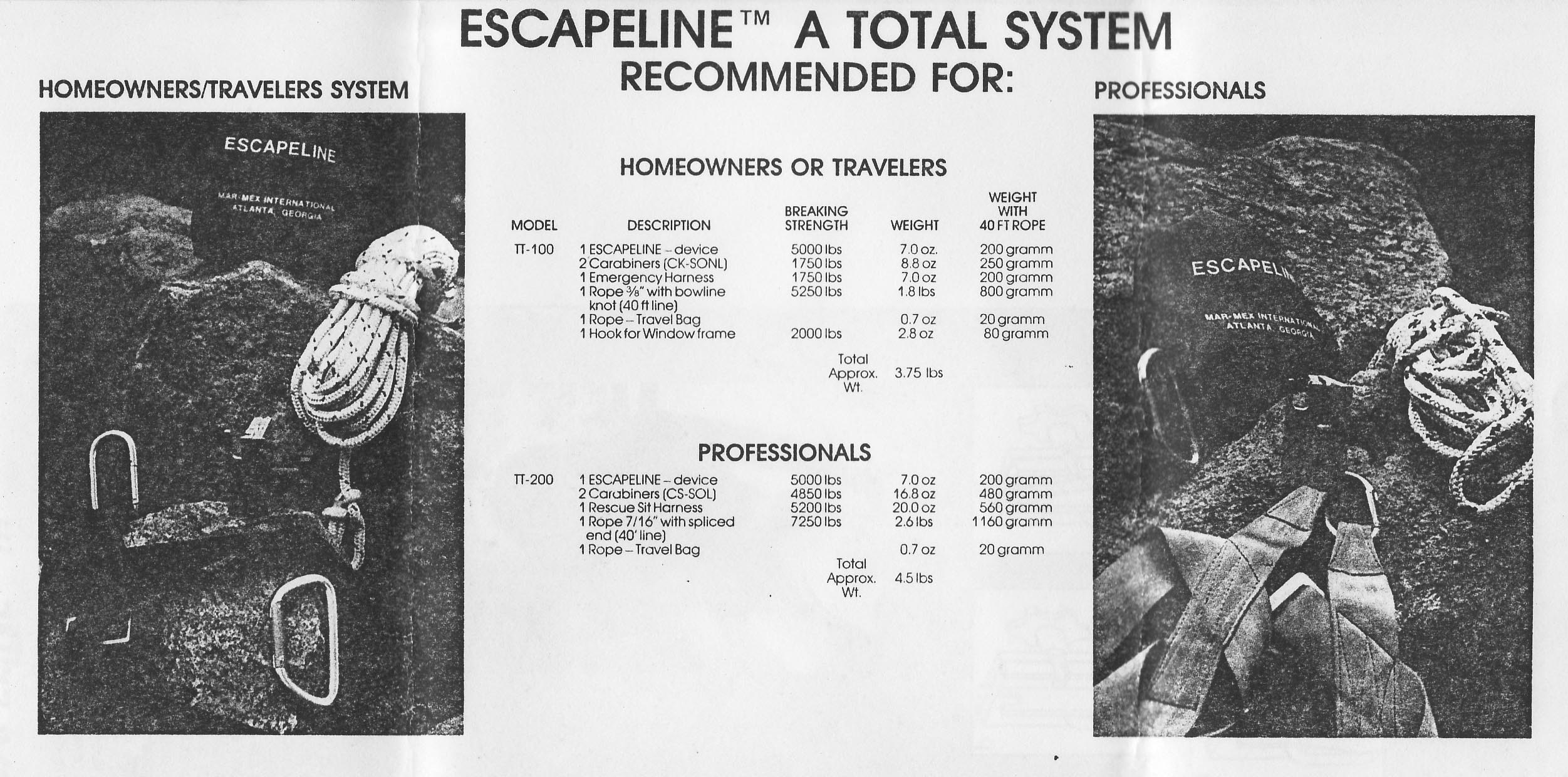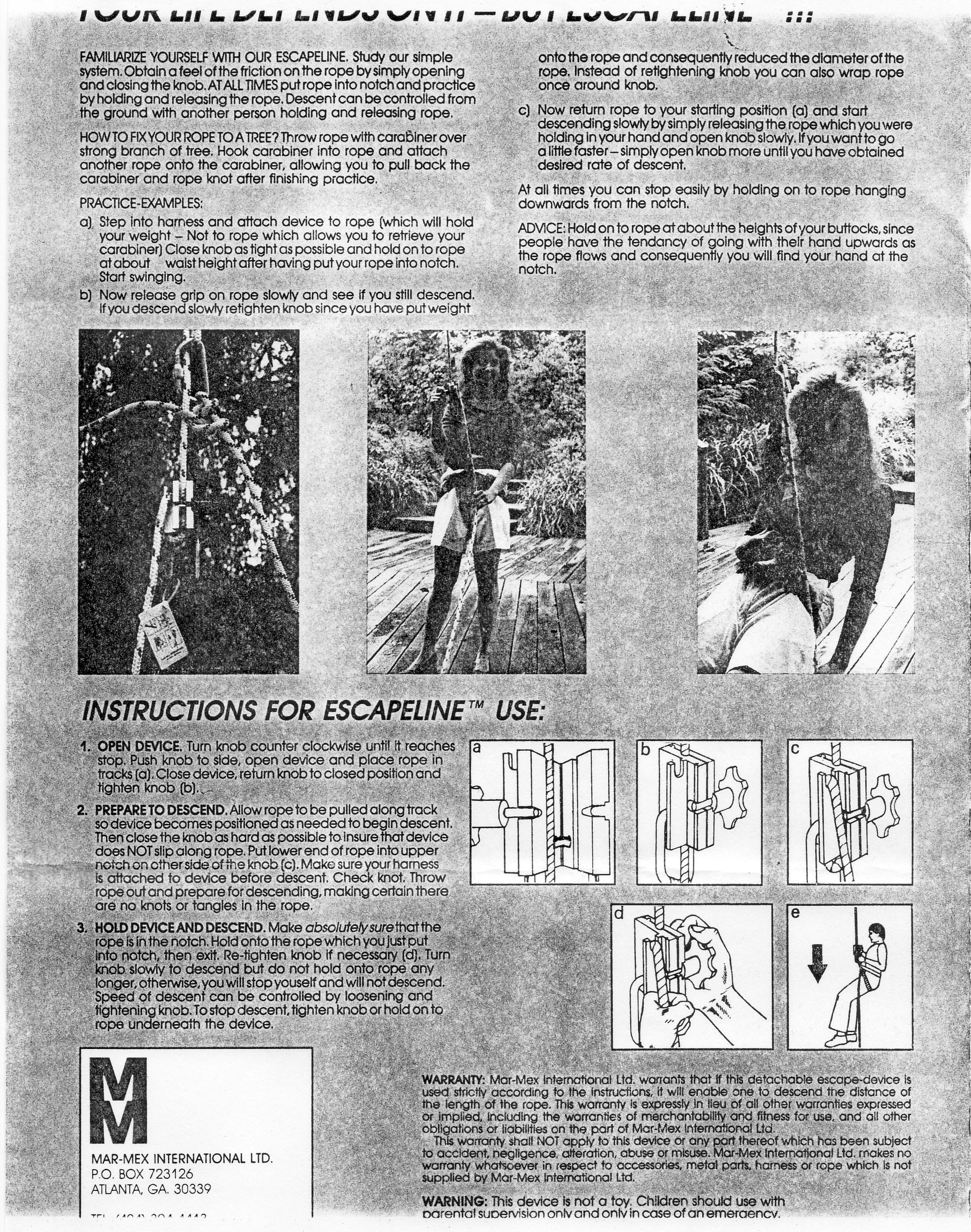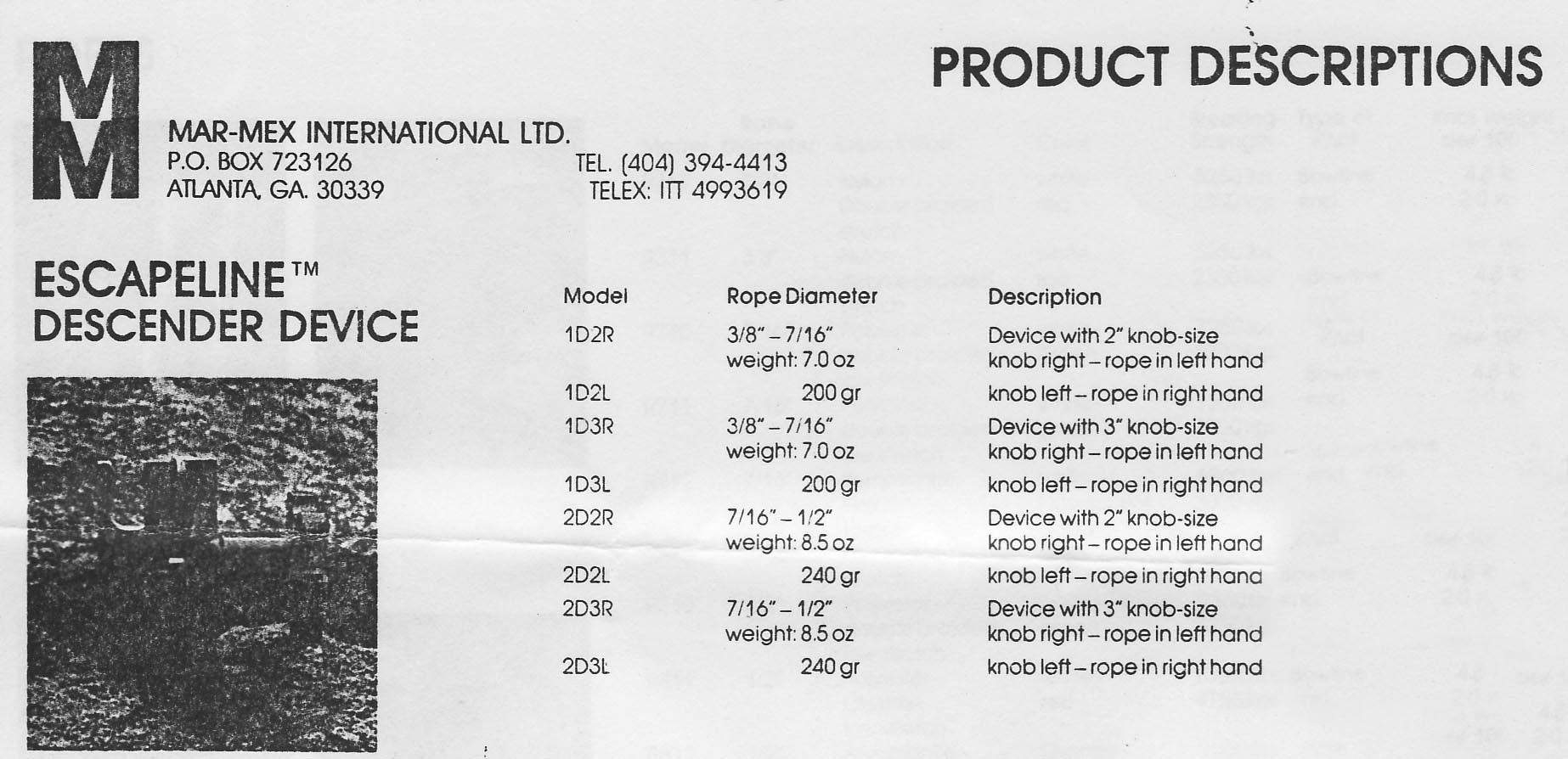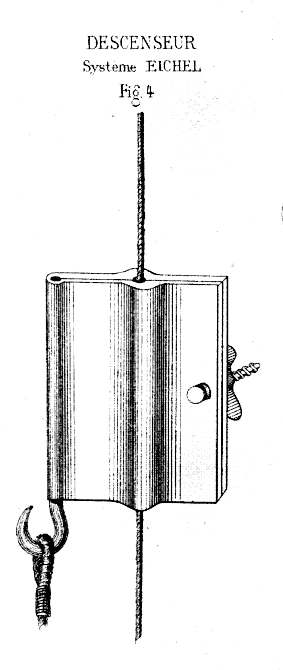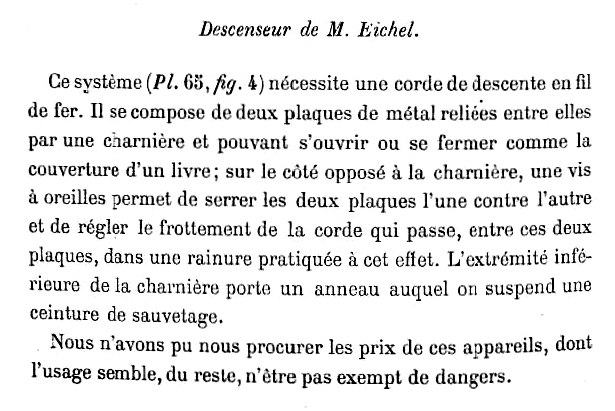Technical Details
I acquired my Mar-Mex Escapeline from J. E. Weinel Inc. in 1985.
The Mar-Mex Escapeline is the only commercial squeeze brake
that I am familiar with. It consists of two extruded aluminum
pieces that hinge together. Each piece has a straight groove where
the rope runs. A swinging knob locks the plates together, and
allows the user to adjust the force the plates exert on the standing
line. One of the plates has a hook on the side, and the rope must
be looped over this hook. There are two carabiner holes, a lower
one for attaching to one’s harness and an upper one for attaching
other devices (e.g., a second Escapeline).
My Escapeline has "MAR-MEX INTERNATIONAL" molded
into the handle. A yellow sticker on one side reads:
ATTENTION
MAKE SURE ROPE IS
IN NOTCH BEFORE DESCENT
ROPE
(The last word is not my typo). The yellow sticker on the other
side reads:
MAR-MEX INTL.-ATLANTA
PATENT PENDING
USA CANADA JAPAN KOREA
AUSTRALIA EUROPEAN COUNTRIES
PCT APPLICATION
Comments
I have a Mar-Mex International Ltd. product description sheet that lists the following models:
| Model |
Rope |
Weight |
Description |
| 1D2R |
9.5-11 mm. |
200 g. |
50 mm. knob on right side |
| 1D2L |
9.5-11 mm. |
200 g. |
50 mm. knob on left side |
| 1D3R |
9.5-11 mm. |
200 g. |
75 mm. knob on right side |
| 1D3L |
9.5-11 mm. |
200 g. |
75 mm. knob on left side |
| 2D2R |
11-13.7 mm |
240 g. |
50 mm. knob on right side |
| 2D2L |
11-13.7 mm |
240 g. |
50 mm. knob on left side |
| 2D3R |
11-13.7 mm |
240 g. |
75 mm. knob on right side |
| 2D3L |
11-13.7 mm |
240 g. |
75 mm. knob on left side |
Squeeze brakes have generated a lot of interest in the caving
community because they have a large contact area and do not bend
the rope, and therefore appear to be appealing for long drops.
Unfortunately, a simple squeeze brake does not provide adequate
control because the friction is quite sensitive to the separation
between the plates, and unlike snubbing, increasing the tension
below the device does not effectively increase friction; instead,
it decreases it somewhat. Mar-mex got around this by adding the
hook on the side. The rope is looped over the hook, which provides
a snubbing action in addition to the friction from the brake itself.
The knob can be adjusted so that most of the friction comes from
squeezing the rope, while the snubbing provides an increase in
friction as the tension below the device is increased.
I believe that the Mar-Mex Escapeline is protected by U.S. Patent 4,603,755 - at least the patent
drawings match the device and the date on the patent is reasonably
consistent with when I acquired my Escapeline. Similar ideas appear
in older US Patents 4,448,281 and 4,056,166; each of which is referred to by
the later patent.
|
 |
Warning:
The
hook must be upright, and the rope must be draped over the hook.
The Escapeline will not function properly if rigged upside-down. |
 |
|
History
The 4-volume set “La Marine à l'Exposition universelle de 1878” contains descender developed by Monsieur Eichel that closely resembles the Mar-mex Escapeline. These were probably developed independently. I have no evidence that Jurgen Mesche knew about Monsieur Eichel’s 1878 design when he patented the Escapeline in 1974, or that the two ever met. The 1878 document's descender evaluation concludes “the use of which seems, of course, not to be free from danger.”

For far more content, use a larger monitor and a full-width window.
Hundreds of cell phone users complained and asked me to for a simpler, mobile friendly site. In particular, they wanted me to limit each page to a small number of pictures and minimize my use of text. This new site provides what they asked for.


